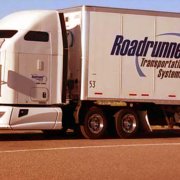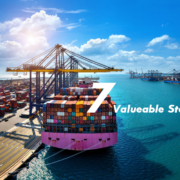An organization that engages in maritime transportation is a shipping company. Owners of ships usually engage in either maritime or inland waterway transport. Many shipping companies operate charter ships in addition to owning their own ships.
The biggest shipping companies fleets use half of their ships and they charter the remaining half.
What is the process of running a shipping company?
The HGB, specifically section 476, defines a shipping company as one which is owned or controlled by a legal entity, partnership, or merchant.
Several companies or persons may join forces to form a partner shipping company rather than a one-ship company. Large shipping companies mostly use large ships of both types owned and chartered today.
Both the equipment and maintenance of a ship are the responsibilities of a shipping company. In addition, the owner of the ship is responsible for paying the wages of the personnel. The management of ships can also be outsourced to contract ship owners, so the shipping company does not need to manage the ship directly.
Chartering is another task that a shipping company may be tasked with, although it usually falls within the sphere of responsibility of a shipbroker. Normally, a shipping company does not own a ship, while a ship owner does.
What are the responsibilities of a shipping company?
Liner agencies, clearing agents, and shipbrokers generally work closely with shipping companies. As in the real estate sector, a shipbroker is not just responsible for the purchase and sale of ships, but also for their chartering.
The salary of a pilot includes so-called commissions, which are percentages of freight or time charter rent. Germany’s shipbrokers primarily work as shipping agents.
Assuring that goods pass through customs is the responsibility of a clearance agent. The clearing agent must also handle immigration, health care, and provisioning and procurement of spare parts. A clearing agent works at a port.
As a last resort, liner agencies represent multiple lines of shipping. As an analogy, you could compare the goods that are brokered here to the transport of a commercial agent. Freight collection, freight acquisition, registration, delivery, and documentation are among the services of the liner agencies.
Container ships and shipping companies
Shipping underwent a real revolution in the 1950s and 1960s. There has been a considerable increase in transport capacity as a result of the invention of container shipping.
Freight forwarder Malcolm McLean had an idea to eliminate the complexities of handling various formats, including bales, pallets, sacks, and drums. A container is a large, standardized container that can be loaded and unloaded directly from trains or trucks onto ships, and the container’s size is standard.
As one of the first shipping companies to use containers, Pan-Atlantic, later known as SeaLand Industries, pioneered the use of containers. A ship built by this company sailed from Newark to Houston in 1956, the first container ship.
What is the oldest shipping company in the world?
The operation of a shipping company had already started even before Christopher Columbus or Vasco da Gama sailed into the world’s oceans. Kings own most of the ships at that time and not owned by private companies.
The oldest shipping company of this kind in Germany is Sloman, founded in 1793. Sloman headquarter is in Bremen. Stevenson Clarke Shipping once held the world record for oldest shipping company. In 2012, the British company went bankrupt. The Stevenson Clarke begin operations in 1730.
What is the most important shipping company in the world?
Shipping companies of logistics and freight forwarding from both the Europe and Asia are included in the list of the top leading and world’s largest companies. Shipping companies primarily engaged in container shipping made up the top ten largest of the list.
M*rsk Line has 707 container ships, some of which are over 399 metres long. M*rsk Line is ranked number one in Denmark.
In second place are the Swiss company Mediterranean Shipping Company as the best logistics company in USA. This company has 515 ships, and third and fourth places belong to the CMA CGM Group (France). The Cosco, which is owned by the Chinese, followed by Hapag-Lloyd, which is based in Germany.
Conclusion: The shipping industry today
There has been intense competition in the shipping industry over the past few years, both in terms of ship size and modernization. Sustainability as well as ecological issues are hence becoming increasingly important. There has been a remarkable increase in the efficiency of Triple-E ships in recent years.
Over the past few decades, there has been a great deal of consolidation in the global shipping market. The shipping company market share of the five largest players now stands at more than 60 percent after eight of the largest companies to date disappeared entirely from the market in 2015 and 2016 alone!
Shipping company is now forming alliances with one another to maximize capacity utilization. The fact is that these phenomena, combined with globalization and digitalization, make for a fairly exciting market.










